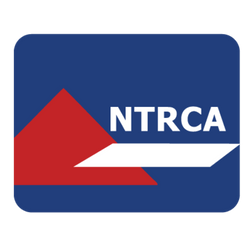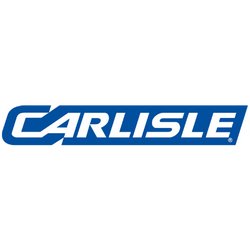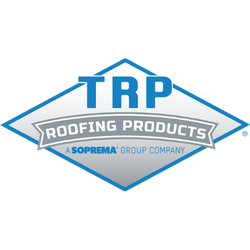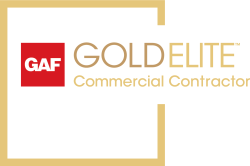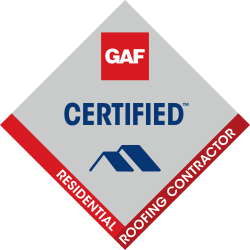Dallas, renowned for its volatile weather patterns, often experiences severe storms that can wreak havoc on roofs. Whether it’s hail, high winds, or heavy rainfall, storm damage poses a significant threat to both residential and commercial properties. To ensure your roof remains in optimal condition, it’s crucial to be able to identify signs of damage promptly. In this guide, we’ll delve into the indicators of roof damage for both residential and commercial buildings, emphasizing the importance of timely inspections to prevent costly repairs or replacements exacerbated by weathering.
Identifying Storm Damage:
Residential Properties:

Missing or Damaged Shingles
Inspecting your roof for missing or damaged shingles is crucial for maintaining its integrity and protecting your home from potential water damage. Begin with a thorough visual inspection, scanning the entire surface for signs of missing, cracked, or curled shingles. Use a ladder to get a closer look, checking each row methodically for any gaps or areas of concern. Look out for cracks and curling, as these can compromise the shingles’ ability to protect your home from the elements. Document any findings and address repairs promptly to prevent further damage. Regular inspections and timely repairs are key to ensuring your roof continues to provide reliable protection for your home.

Interior Leaks
Checking for water stains or moisture spots on ceilings and walls is essential to detect potential roof leaks early. Begin by visually inspecting the interior of your home, paying close attention to ceilings and walls for any discoloration or damp patches. Water stains often appear as discolored patches or streaks on surfaces and may indicate a leak from the roof. Additionally, be vigilant for any signs of peeling paint or wallpaper, as well as soft or sagging areas, which could suggest water damage. Promptly addressing any water stains or moisture spots can help prevent further damage to your home’s interior and allow for timely repairs to the roof.

Exterior Debris
Look for debris such as tree branches or fallen shingles scattered across the roof or in the yard.Inspecting for debris such as tree branches or fallen shingles scattered across the roof or in the yard is an important step in assessing potential damage to your roof. Begin by visually scanning both the roof surface and the surrounding yard area. Look for any signs of debris accumulation, including branches, leaves, or shingles that may have been dislodged during a storm or high winds. Debris on the roof can block drainage pathways and cause water to pool, increasing the risk of leaks and structural damage. Similarly, fallen shingles in the yard may indicate damage to the roof and should be investigated further. Clearing away any debris promptly can help prevent further damage and ensure the continued integrity of your roof.

Granule Loss
Begin your inspection by examining the ground for granules from the shingles, as their presence can serve as an early indicator of roof wear and tear. Look for small, granular particles that resemble the texture and color of your roof shingles. These granules serve as a protective layer on the shingles and can become dislodged over time due to weathering, age, or other factors. The presence of an excessive amount of granules on the ground suggests that your shingles may be experiencing wear and tear, potentially compromising their effectiveness in protecting your home from the elements. If you notice a significant amount of granules on the ground, it’s advisable to have your roof inspected by a professional to assess its condition and determine if any repairs or replacement are necessary. Taking proactive measures to address roof wear and tear can help prolong its lifespan and prevent costly damage to your home.
Commercial Properties with Flat Roofs:

Missing or Damaged Roof Material
You should being your commercial roof inspection by systematically scanning the entire roof from various vantage points to ensure thorough coverage. Look for indicators such as missing membrane sections, punctures, tears, or any visible signs of deterioration that could compromise the roof’s functionality. Place special emphasis on areas where the roofing material interfaces with protrusions like HVAC units, vents, or drainage systems, as these areas are prone to vulnerability. Additionally, scrutinize the edges and corners of the roof for any indications of wear and tear caused by exposure to environmental elements over time. It’s imperative to meticulously document all observations and promptly seek professional assistance upon identifying significant damage to facilitate timely repairs and mitigate potential operational disruptions.

Displaced Insulation
Extend your assessment by observing the condition of the insulation, as its displacement or dampness may serve as telltale signs of water infiltration. Take note of any irregularities such as shifted or compacted insulation layers, which could suggest potential water penetration through the roof membrane. Additionally, be vigilant for any areas where the insulation appears wet or damp, as this could indicate ongoing leaks or moisture buildup within the roofing system. Addressing such issues promptly is essential to prevent further damage to the building structure and ensure optimal energy efficiency.

Interior Leaks
Be sure to do an additional inspection for indications of water infiltration within the building’s interior. Observe carefully for telltale signs like discolored stains or areas of dampness on ceilings and walls, as these could signify potential leaks or moisture penetration originating from the roof. Additionally, be attentive to any musty odors or changes in air quality, which may accompany water damage and mold growth. Identifying and addressing such signs promptly is paramount to prevent structural deterioration and maintain a healthy indoor environment.

Edge and Fastener Damage
Expand your evaluation to encompass a thorough examination of the roof edges and fasteners, ensuring comprehensive scrutiny for any signs of loosening or damage. Pay meticulous attention to these critical areas, assessing the perimeter and fastening mechanisms for their integrity. Check for any indications of loosened screws, bolts, or other fasteners, and carefully inspect for visible damage such as rusting or bending. Additionally, evaluate the condition of flashing and sealants surrounding edges, vents, and penetrations, as these vulnerable points demand careful consideration. Swift identification and resolution of any issues are imperative to prevent potential water infiltration and uphold the structural integrity of your commercial roof.

Exterior Paint Discoloration
In instances of severe damage, it’s crucial to extend your examination beyond the roof itself and observe the exterior walls for additional signs of water intrusion. Pay close attention to areas where the walls meet the roofline, as these regions are particularly susceptible to water penetration originating from roof leaks. Look for telltale signs such as blistering or peeling paint, discoloration, or staining on the exterior surface of the walls. These manifestations may indicate that water has seeped through the roofing material and compromised the integrity of the building envelope. Additionally, be vigilant for any soft spots or swelling in the wall material, as these could suggest hidden water damage beneath the surface. Detecting such symptoms promptly is essential to prevent further deterioration of the building structure and minimize the risk of mold growth or other associated issues.
Importance of Timely Inspections:
Getting your roof inspected promptly following a storm is crucial for several reasons:
- Early Detection: Professional inspections can uncover damage that may not be immediately apparent to untrained eyes, allowing for prompt repairs.
- Preventive Maintenance: Identifying and addressing minor issues early can prevent them from escalating into larger, more expensive problems.
- Insurance Claims: Documentation of storm damage through inspections can streamline the insurance claims process and ensure fair compensation.
- Safety and Security: Timely repairs or replacements help maintain the structural integrity of the roof, ensuring the safety and security of occupants.
In Dallas, where severe weather is a common occurrence, being proactive about roof maintenance is essential for safeguarding your property investment. By familiarizing yourself with the signs of storm damage and scheduling regular inspections with trusted professionals like GreenCo Construction Services, you can mitigate risks and ensure your roof remains resilient against nature’s wrath. Don’t wait until it’s too late—schedule your free inspection today and protect your home or business from the elements.





